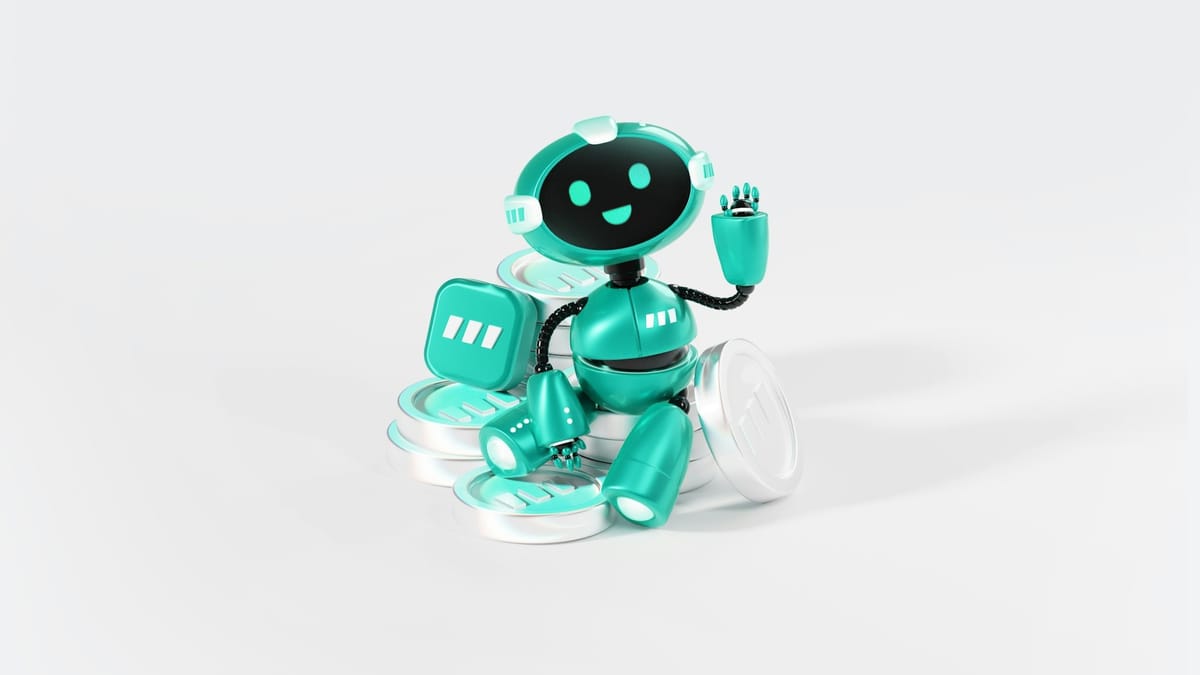Breakthrough or Risk? First Trial Shows AI Therapy Chatbot Eases Depression and Anxiety
Could an AI chatbot really help with depression or anxiety? With millions struggling to access mental health care, a new study says yes, and the results might surprise you. Let’s explore how technology is quietly transforming emotional support.

What if an AI could significantly ease your depression or anxiety, showing results comparable to human therapy in its very first major trial—but using many of the apps available today might mean stepping into an unregulated digital danger zone?
This groundbreaking study forces us to ask: are we witnessing a mental health revolution, or sleepwalking into a new kind of risk?
The Lede: A Digital Lifeline in the Mental Health Chatbot Era?
Millions around the globe suffer silently under the weight of depression, anxiety, and eating disorders, conditions that often remain untreated due to structural barriers in mental health care. Amid this crisis, artificial intelligence is emerging as a surprising yet promising ally. In a landmark development, researchers at Dartmouth College have conducted the first randomized controlled trial (RCT) of a generative AI therapy chatbot, offering hope and igniting debate in equal measure.
The study, published in NEJM AI, focuses on "Therabot," an AI-powered mental health chatbot specifically trained to address symptoms of major depression (MDD), generalized anxiety disorder (GAD), and high-risk behaviors related to eating disorders (CHR-FED). Over eight weeks, participants interacting with Therabot experienced statistically significant reductions in symptoms compared to a control group, pointing to the tool’s potential as a scalable, accessible intervention.
What sets Therabot apart is its use of generative AI, which enables more dynamic, personalized conversations compared to earlier rule-based chatbots. Participants reported high engagement, equivalent to eight therapy sessions, and even developed a sense of trust and collaboration akin to the therapeutic alliance typically formed with human therapists.
Yet, this promising advance surfaces during what many experts describe as a digital mental health "Wild West." While Therabot was rigorously developed and tested, the broader marketplace is awash with apps making bold claims without transparent evidence or regulatory oversight. The Dartmouth study thus serves as both a beacon of possibility and a cautionary tale. Without clear guidelines, ethical standards, and rigorous validation, the proliferation of AI mental health tools could pose serious risks.
The Problem: The Mental Health Crisis & Limits of Current Digital Mental Health Tools
The rise of AI mental health tools like Therabot must be understood in the context of a pressing global crisis. Disorders like MDD, GAD, and eating disorders affect millions, yet access to effective treatment remains limited due to cost, geography, provider shortages, and stigma. In the U.S., for example, there may be as many as 1,600 patients per mental health provider. The result is long wait times, infrequent sessions, and unmet needs that leave individuals struggling to cope.
Digital mental health solutions emerged as a potential remedy to these challenges. Early interventions included informational websites, support forums, and basic chatbot apps. However, these tools often failed to engage users meaningfully. Early chatbots like ELIZA, while groundbreaking in the 1960s, offered repetitive, impersonal exchanges that couldn't adapt to the nuanced needs of users. Sustained use was rare, and therapeutic outcomes were minimal.
The primary failure of these early tools lay in their inability to replicate the emotional depth and personalization of human therapy. Without the capacity to dynamically adjust to a user's evolving emotional state or provide evidence-based interventions, they often left users feeling disconnected or misunderstood. This disengagement severely limited their clinical utility.
This is the gap that modern AI tools like Therabot seek to fill. By leveraging generative AI, these tools offer the possibility of sustained, meaningful engagement, but only if built and tested with clinical rigor. Therabot's development reflects a recognition of the past's shortcomings and a step toward more human-like, effective digital support.
The Innovation: Therabot-Evidence-Based AI Therapy Takes Center Stage
Therabot emerged from a determined effort to bridge the gap between mental health needs and digital care capabilities. Developed by Nicholas Jacobson and Michael Heinz at Dartmouth College, Therabot was designed not just as another chatbot, but as a clinically grounded tool based on cognitive behavioral therapy (CBT) principles and built with safety, personalization, and evidence in mind.
Unlike legacy chatbots, Therabot uses generative AI to craft personalized responses in real-time. This allows for more fluid, nuanced conversations tailored to each user's input. Recognizing the risks associated with general AI models trained on unfiltered internet data, the developers took a cautious, evidence-based approach. They trained Therabot on a curated dataset grounded in psychotherapy best practices, steering clear of the vague or even harmful advice that can plague less structured AI systems.
The application is accessed through a smartphone and engages users in reflective, therapeutic dialogue. For example, instead of merely validating emotions, Therabot might prompt deeper introspection or propose CBT techniques for managing distress. Crucially, the chatbot is equipped with safeguards: if users mention self-harm or suicidal thoughts, the tool halts and offers emergency contact information, ensuring users can connect with real human support in crisis moments.
This blend of cutting-edge AI with rigorous clinical design marked a new chapter in digital mental health. It set the stage for a controlled, scientific assessment of whether an AI-driven tool could provide therapeutic benefit comparable to human interaction. The resulting RCT wasn't just a tech experiment, it was a litmus test for the responsible application of AI in mental health care.
The Evidence: Rigorous Testing of AI Therapy Effectiveness via RCT
To substantiate the tool's impact, Dartmouth researchers conducted an RCT involving 210 adults experiencing clinically significant symptoms of depression, anxiety, or eating disorders. Half the participants were given full access to Therabot for four weeks, while the rest formed a waitlist control group. Symptoms were assessed at the start, after four weeks, and again at eight weeks to gauge the therapy's short- and mid-term impact.
The findings were striking. Therabot users showed statistically significant reductions in all target symptoms compared to controls. Depression symptoms decreased by an average of 51%, anxiety by 31%, and body image-related eating disorder symptoms by 19%. These improvements were comparable to those seen in traditional outpatient therapy, despite only about six hours of total chatbot interaction, a notable achievement in such a short time.
Engagement metrics reinforced the results. On average, users spent over six hours with Therabot during the trial, with interaction levels equivalent to eight typical therapy sessions. Many initiated conversations without prompts and during periods associated with heightened emotional distress, such as late nights. Perhaps most surprisingly, participants rated their therapeutic alliance with Therabot at levels comparable to human therapists, suggesting users felt heard, supported, and engaged.
Still, the study comes with caveats. All outcomes were self-reported, raising concerns about subjective bias. And while the controlled setting ensured safety and efficacy, it does not reflect the less structured real-world environments where commercial AI mental health apps now proliferate. Nonetheless, the study offers the first robust, peer-reviewed evidence that generative AI, when developed with clinical oversight, can deliver meaningful therapeutic benefit.
A Personal Lifeline: Jordan’s Story
Jordan had always been the “strong one” among their friends, calm, dependable, quick to listen. But when the weight of graduate school, family pressures, and an unresolved breakup all collided, that strength quietly crumbled. It started with sleepless nights, then full days without getting out of bed. Texts went unanswered. Therapy felt out of reach: too expensive, too much effort to find the right person, too exhausting to explain everything from the beginning.
One night, around 2:30 a.m., alone and spiraling, Jordan downloaded an app they’d seen mentioned in a mental health subreddit, Therabot. It wasn’t a big decision. More like a last-ditch swipe.
The first conversation was hesitant. Jordan typed, “I don’t even know what to say.” The reply wasn’t magical, but it was warm. Curious. Unjudging. Over the next week, Jordan returned night after night. Therabot didn’t solve everything, but it asked the right questions. It remembered things. It helped Jordan breathe again, just a little easier. Most importantly, it was there, when no one else was.
Weeks later, when Jordan finally found a human therapist, it was Therabot who helped them prepare for that step.
Your Top Questions Answered
1. Can AI therapy chatbots really help with depression and anxiety?
Yes, with caveats. Recent randomized controlled trials, like the Dartmouth study on Therabot, show significant symptom reductions in depression (≈51%) and anxiety (≈31%). However, these results come from controlled settings with clinical oversight. Outside of such environments, evidence is still emerging and variable. While promising, these tools should be seen as supplements, not replacements, to professional care.
2. Are my conversations with AI chatbots private?
Privacy varies by app. Most commercial AI therapy chatbots operate under unclear regulations, and user data may be stored, shared, or used for model training unless explicitly stated otherwise. Always check privacy policies and data storage practices before use. For sensitive topics, like self-harm, medical advice, or personal trauma, relying solely on chatbots can be risky if data isn't securely encrypted or anonymized.
3. Can AI chatbots replace human therapists?
No. While AI can mimic elements of therapy and form emotional rapport, it lacks the nuance, emotional intelligence, and long-term relational depth of human therapists. Experts agree AI should support, not replace, human-led care. AI can enhance accessibility and bridge gaps in care, but it doesn’t yet match the adaptive empathy and accountability of trained professionals.
4. Do AI mental-health chatbots have safety risks?
Yes, there are key risks. AI chatbots can “hallucinate” false information up to ~27% of the time, misinterpret serious issues, or provide harmful responses, especially with vulnerable users like teens. Without built-in safeguards, privacy protection, and clinical supervision, there's potential for misuse, misdiagnosis, or worsening distress.
5. Are AI therapy apps regulated?
Mostly not, yet. Apart from a few FDA-approved digital therapeutics, most mental‑health chatbots operate in a regulatory grey zone. That means many available apps haven’t undergone rigorous testing, oversight, or validation. This lack of regulation raises red flags about effectiveness, safety, data ethics, and appropriate use. Users should approach new or unverified tools with caution.
Key Takeaways
AI Therapy Breakthrough: The first randomized controlled trial (RCT) shows that Therabot, an AI therapy chatbot, can significantly reduce symptoms of depression, anxiety, and eating disorders, comparable to traditional therapy.
- Engagement and Trust: Users interacted with Therabot for an average of six hours, equivalent to eight therapy sessions, and reported a therapeutic alliance comparable to that with human therapists.
- Clinical Validation: The RCT provided robust evidence that Therabot can lead to clinically meaningful improvements in mental health symptoms, marking a significant step forward in AI therapy.
- Regulatory Concerns: The rapid proliferation of AI therapy apps in the market often lacks rigorous clinical validation and oversight, raising concerns about safety and efficacy.
- Safety Protocols: Therabot includes safety protocols to handle high-risk content, such as self-harm or suicide, by providing immediate access to emergency services, unlike many commercial chatbot therapies.
- Personalization: Therabot uses generative AI to deliver personalized, contextually relevant responses, addressing the limitations of earlier, less sophisticated chatbots.
- Evidence-Based Development: Therabot was developed using evidence-based practices, particularly Cognitive Behavioral Therapy (CBT), ensuring its responses align with clinical best practices.
- Potential for Scalability: AI therapy tools like Therabot could provide scalable, accessible mental health support, potentially reaching millions of individuals who lack access to traditional therapy.
- Need for Ethical Frameworks: The rapid adoption of AI in mental health requires urgent development and enforcement of ethical frameworks and safety standards to prevent harm and exploitation.
- Future Integration: The successful integration of AI therapy tools into existing healthcare and insurance systems is critical for making these solutions accessible and affordable, ensuring they can effectively augment traditional mental health care.
Conclusion: Cautious Optimism for the Future of AI in Mental Health Care
The journey of Therabot from concept to randomized controlled trial marks a pivotal moment in the ongoing quest to address the global mental health crisis. The Dartmouth study provides the first robust, scientifically validated evidence that a sophisticated generative AI mental health tool can produce clinically meaningful reductions in symptoms for conditions like depression, anxiety, and eating disorder risks.
It demonstrated that AI therapy holds the potential not only to alleviate suffering but also to foster engagement and even a sense of therapeutic alliance, suggesting that technology can bridge some of the gaps left by traditional care models. This achievement signifies undeniable progress in the field of AI mental health treatment, offering a beacon of hope for millions seeking accessible and effective support.
However, this beacon must be viewed through a lens of profound caution. The very power that makes generative AI mental health tools promising also makes them potentially perilous if deployed irresponsibly. The success of Therabot was achieved under careful clinical supervision and with a tool built upon evidence-based principles – conditions starkly absent in much of the current commercial chatbot therapy market. The warnings from researchers like Heinz and Jacobson, echoed by ethicists like Bélisle-Pipon, cannot be overstated.
Without urgent attention to AI therapy regulation, enforceable safety and efficacy standards, and clearly defined AI mental health ethics frameworks, we risk unleashing technologies that could cause harm, exploit vulnerable individuals, and ultimately undermine trust in both AI and mental healthcare. The "Wild West" atmosphere requires immediate intervention, demanding robust FDA AI therapy oversight and greater transparency from developers.
Navigating the path forward requires a delicate balance. It demands embracing innovation while rigorously interrogating its implications. The future of AI in mental health care likely lies not in replacing human connection but in augmenting it, creating a hybrid ecosystem where technology supports clinicians, extends reach, and empowers patients. This requires ongoing, independent research to replicate findings, explore long-term effects, and identify best practices. It necessitates collaboration between AI developers, mental health professionals, ethicists, policymakers, and patients themselves.
The ultimate goal must be to harness the transformative potential of generative AI mental health solutions diligently and ethically, ensuring that technological advancement translates into genuine, safe, and equitable improvements in human well-being. The promise is significant, but the path to realizing it responsibly is narrow and demands our utmost care and vigilance.
References
https://onlinelibrary.wiley.com/doi/10.1002/hast.4979
https://pubmed.ncbi.nlm.nih.gov/38814681/
https://pmc.ncbi.nlm.nih.gov/articles/PMC10937180/
https://pubmed.ncbi.nlm.nih.gov/40397933/
https://pubmed.ncbi.nlm.nih.gov/40022267/
https://www.theverge.com/policy/665685/ai-therapy-meta-chatbot-surveillance-risks-trump
https://pubmed.ncbi.nlm.nih.gov/30545815/
This article was written by Lucía Romero Lastra, a seasoned writer and editor with expertise in crafting engaging and informative articles




